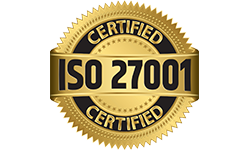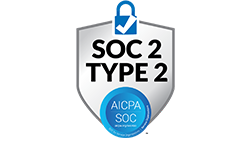
You must have heard about the HL7 term if you are in the healthcare sector. With the rise and up-gradation of technologies, especially in healthcare sectors, certain standards were formed for the safety and facilitation of data of patients. HL7 is the updated version of the international standard, which is used for providing guidance when healthcare providers share data.

HL7 refers to Health Level 7. Formed by Health Level Seven International which is a non-profit organization, it provides a comprehensive and well-structured framework for the exchange, integration, implementation, sharing, and retrieval of the health information of people. Supported by various bodies in the healthcare sector, HL7 has been implanted and accepted by more than 1600 members in more than 50 countries. Various government stakeholders, payers, pharmaceutical employees, companies, vendors, firms, healthcare service providers, and more are affected by this standard.
Let’s have a deeper look at HL7.
What is HL7 and how does it work?
In the digital age, everything is data, and everything is connected. Medical information is now being stored in digital files meaning data. When computer systems feed information of patients, there is a proper record and this might be used for patient tracking. Since the healthcare sector is very large, it needs to communicate with other systems and while receiving new information previous information needs to be retrieved. So HL7 lays down standards, methods, and a set of guidelines for healthcare systems to communicate with other systems. When these standards are met, the data can be shared and processed in an organized manner. These standards are used for easy sharing and minimizing the risk factors.
HL7 works on the application layer of systems following the OSI model of application designing. Let’s not jump into technical aspects and understand that these rules allow the safe exchange of data between different systems.
Components of HL7 Message Structure
Let’s talk about different elements of HL7 message structure, which is its major contribution over previous versions. HL7 messages are used for building communication between disparate healthcare systems. The main feature is that HL7 messages are formed in a human-readable format. ASCII code is used here. The major components are –
HL7 Segments
Each segment of the HL7 message is containing one particular section of information. For example, one segment will have patient information while the other will have his/her visit data. The first field of the segment will denote the name of the segment. In HL7 messages, more than 120 different segments are available.
HL7 Composites
Each segment in the HL7 message will contain composites also. Composites mean fields here. These are formed by primitive data types, for example, character string or number. Sometimes sub composites are also present. Characters like | (pipe), & (ampersand), and ^ are used to separate composites in the HL7 message.
Delimiter Characters
Certain special characters which are used for separating composites and segments are used in HL7 messages and these are called delimiters. Following default, characters are used-
0x0D Denotes segment end
| Composite Delimiter
^ Sub-composite Delimiter
& Sub-sub-composite Delimiter
~ Separates repeating segments
\ Escape Delimiter
Why is it needed by Healthcare Sector?
An important question. Healthcare providers and specialists need to access data through multiple electronic systems to oversee the complete profile and medical history of the patient. This is easy for a local hospital but when a patient goes to a big hospital in another city, then retrieving information can become tricky. Since the data is being exchanged between two systems that are incorporated in two different areas, certain standards and rules need to be followed by both sides. Fast Healthcare Interoperability Resources (FHIR) comes into play here and this standard makes sure that messaging format HLv2 and others are exercised.
These standards act as a bridge through which healthcare systems and modern information technology can interact. Immersive data structure and digital technology allow the healthcare system to be efficient in providing good services.
Healthcare systems use tons of applications daily, like radiology, laboratory and patient administrative systems, MRI, and more. This data is constantly circulated among different systems for the proper working of healthcare systems. Communication and especially a protected and well-managed communication link becomes really important here. Visibility over data but in a protected way is an imminent need by healthcare and these HL7 standards will allow that to happen.
When data can be efficiently integrated across systems and exposed cohesively, it will reduce the risk of information failure and enhance the feasibility of healthcare workers and systems.
Benefits of HL7 Use
Using HL7 in EHR systems in healthcare will lead to the following benefits-
- HL7 will help in creating a single, flexible, and worldwide set of standards that will control the exchange of clinical data.
- Easy exchange of complex and private patient data such as records, lab reports, and test results through healthcare applications will be facilitated.
- End-users will be able to interpret the data easily and it will smoothen the process of electronic data exchange.
- Will improve the healthcare services across multiple networks due to integration of healthcare solutions.
- HL7 will support almost all the healthcare systems around the world leading to better interoperability and healthcare-specific formatted messages
Conclusion
So we have seen that HL7 is the standard of the future and it is being used by almost all of the systems in the healthcare sector. Aventior is one such company that provides healthcare cloud services integrated with HL7 technology. Fastest customization using Salesforce-based EMR have HL7 and FHIR as core data architecture providing the most advanced benefits of this standard to all the transactions and data transfer. To know more, please feel free to write to us at info@aventior.com.
Tell Us for more about your requirements here



